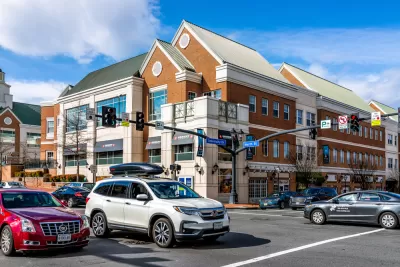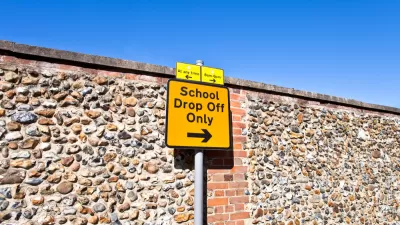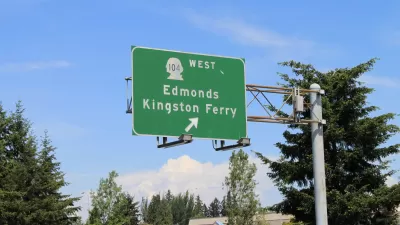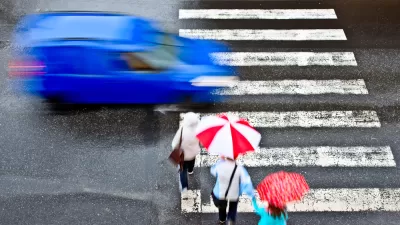Fairfax County wants to move away from a heavy reliance on level of service in favor of more pedestrian- and transit-oriented planning.

A proposal in Virginia’s Fairfax County could shift the focus of local transportation planning to pedestrian infrastructure and transit, moving away from the common level of service (LOS) model that prioritizes the fast movement of vehicular traffic. As Vernon Miles reports for FFX Now, the policy, called “Additional Measures of Effectiveness,” would require the Department of Transportation to evaluate the impact of transportation projects on pedestrian, bike, and transit infrastructure and safety.
According to Gregg Stevenson, deputy director of the Fairfax County Department of Transportation, “if the county wants to become more multimodal and make bus, bicycle, and pedestrian traffic as viable as cars, it needs to update its measures of effectiveness to match that.”
Miles notes that any new transportation analyses wouldn’t apply in the same way across the country. “The presentation noted that the county is broken up into ‘tiers’ of similar land uses, with different modes of transportation emphasized in different areas. For example, the type of bicycle and transit-focused development might be more heavily emphasized in Tysons’ urban environment, but not as much in low-density, residential neighborhoods.”
The agency plans to keep developing the policy throughout 2023.
FULL STORY: Fairfax County could put bicycles and transit on par with cars when gauging transportation needs

Trump Administration Could Effectively End Housing Voucher Program
Federal officials are eyeing major cuts to the Section 8 program that helps millions of low-income households pay rent.

Planetizen Federal Action Tracker
A weekly monitor of how Trump’s orders and actions are impacting planners and planning in America.

Ken Jennings Launches Transit Web Series
The Jeopardy champ wants you to ride public transit.

Crime Continues to Drop on Philly, San Francisco Transit Systems
SEPTA and BART both saw significant declines in violent crime in the first quarter of 2025.

How South LA Green Spaces Power Community Health and Hope
Green spaces like South L.A. Wetlands Park are helping South Los Angeles residents promote healthy lifestyles, build community, and advocate for improvements that reflect local needs in historically underserved neighborhoods.

Sacramento Plans ‘Quick-Build’ Road Safety Projects
The city wants to accelerate small-scale safety improvements that use low-cost equipment to make an impact at dangerous intersections.
Urban Design for Planners 1: Software Tools
This six-course series explores essential urban design concepts using open source software and equips planners with the tools they need to participate fully in the urban design process.
Planning for Universal Design
Learn the tools for implementing Universal Design in planning regulations.
Heyer Gruel & Associates PA
Ada County Highway District
Institute for Housing and Urban Development Studies (IHS)
City of Grandview
Harvard GSD Executive Education
Toledo-Lucas County Plan Commissions
Salt Lake City
NYU Wagner Graduate School of Public Service





























